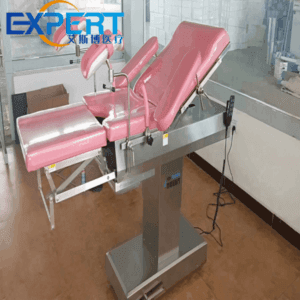Address
304 North Cardinal St.
Dorchester Center, MA 02124
Work Hours
Monday to Friday: 7AM - 7PM
Weekend: 10AM - 5PM
The world of maternity care is constantly evolving, with technology playing an increasingly prominent role in enhancing the birthing experience for expectant mothers. Electric delivery tables, also known as birthing beds or obstetric tables, have emerged as a vital component of modern maternity wards. These innovative devices are transforming the way childbirth is managed, providing a safer, more comfortable, and efficient environment for both patients and healthcare providers. In this extensive article, we will explore the pivotal role of technology, particularly electric delivery tables, in maternity care, elucidating their benefits, technological advancements, and addressing frequently asked questions (FAQs) to provide a comprehensive understanding of their significance.

The care and support provided to expectant mothers during childbirth have a rich history dating back centuries. Traditional practices have gradually given way to modern, evidence-based approaches focused on ensuring the safety and well-being of both mother and child.
In recent decades, the integration of technology has been a defining factor in shaping maternity care. From ultrasounds and fetal monitoring to electronic health records (EHRs), technology has ushered in a new era of precision and efficiency in childbirth and maternity care. Electric delivery tables are at the forefront of this technological revolution.
Historically, delivery tables were manually operated, often necessitating physical exertion from healthcare professionals during labor and childbirth. The advent of electric delivery tables marked a paradigm shift, introducing a more advanced and patient-centric approach to maternal care.
Modern electric delivery tables represent the pinnacle of innovation in maternity care. They seamlessly blend cutting-edge technology with ergonomic design to offer a range of advantages that enhance the comfort, safety, and overall efficiency of maternity care.
One of the primary advantages of electric delivery tables is their precision and customization. Healthcare providers can effortlessly adjust the table’s height, angle, and position, ensuring optimal comfort for both patients and medical staff. This precision is invaluable during labor and childbirth.
Innovations in cushioning materials and padding technology have significantly improved patient comfort during extended periods of lying down. Modern electric delivery tables mitigate the discomfort often associated with childbirth, contributing to a more positive and less stressful birthing experience.
Electric delivery tables are equipped with advanced safety features, including increased weight capacity, secure positioning mechanisms, and emergency backup systems. These features not only enhance patient safety but also bolster the reliability of maternity care.
Some electric delivery tables are seamlessly integrated with imaging technology, such as ultrasound or X-ray. This integration facilitates real-time diagnostics and procedures, reducing the need for patient transfers and streamlining the birthing process.
Electric delivery tables enhance efficiency in maternity care by minimizing the physical strain on healthcare providers, streamlining procedures, and facilitating rapid adjustments during critical moments. This efficiency not only saves time but also contributes to improved patient outcomes.

Modern electric delivery tables are designed with ergonomics in mind. They offer a wide range of adjustments to accommodate the specific needs of patients and medical procedures. This adaptability minimizes strain on healthcare providers and enhances the overall patient experience.
Intuitive remote control systems are a hallmark feature of electric delivery tables. Healthcare professionals can make precise adjustments with the press of a button, reducing the likelihood of errors and ensuring efficient care.
Hygiene is paramount in healthcare settings. Electric delivery tables incorporate materials and coatings that are easy to clean and disinfect, reducing the risk of infection transmission and streamlining the cleaning process.
Some electric delivery tables are designed with eco-friendly materials and energy-efficient components, aligning with sustainability goals in healthcare facilities. These tables promote responsible healthcare practices and help reduce operational costs.
Let’s address some common questions related to electric delivery tables and their role in modern maternity care.
Yes, electric delivery tables are equipped with advanced safety features to ensure the safety of patients and healthcare providers. These features include secure positioning mechanisms and emergency backup systems.
Electric delivery tables improve efficiency by reducing the physical strain on healthcare providers, streamlining procedures, and facilitating rapid adjustments during critical moments. This efficiency not only saves time but also enhances patient outcomes.
Yes, electric delivery tables are highly customizable, allowing patients to request specific positions that make them feel more comfortable during childbirth.
Technology integration in electric delivery tables enables real-time diagnostics and procedures, reducing the need for patient transfers and enhancing the efficiency of maternity care.
Some electric delivery tables are designed with eco-friendly materials and energy-efficient components, aligning with sustainability goals in healthcare facilities. These tables promote responsible healthcare practices and help reduce operational costs.
Electric delivery tables have emerged as indispensable tools in modern maternity care, offering precision, comfort, and safety to expectant mothers. Their integration of technology and ergonomic design exemplifies the potential of innovation to revolutionize healthcare. As the field of maternity care continues to advance, electric delivery tables will remain at the forefront, ensuring that childbirth is a safer, more comfortable, and efficient experience for both patients and healthcare providers.
